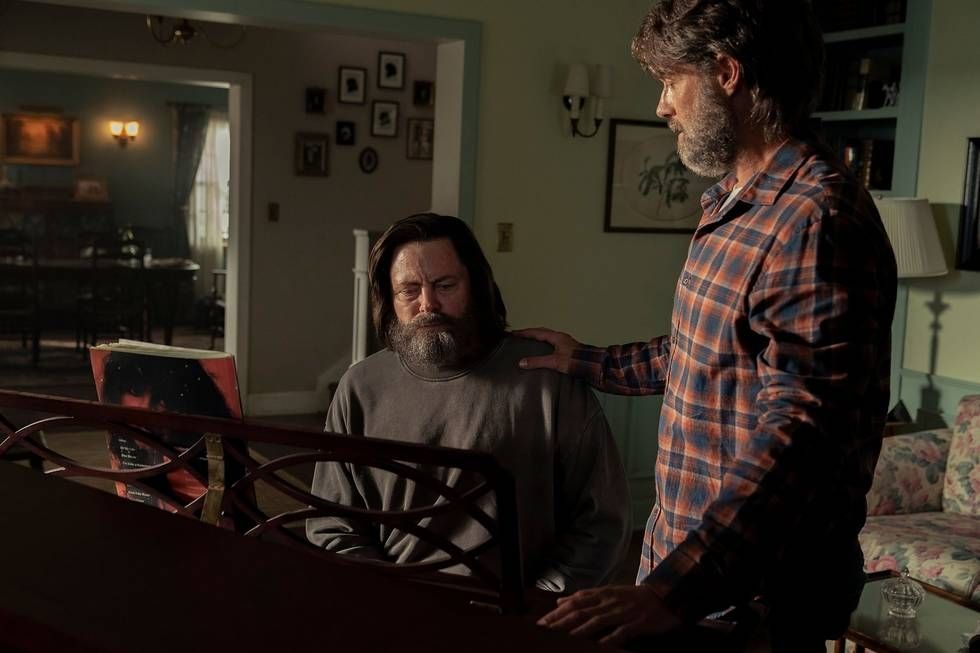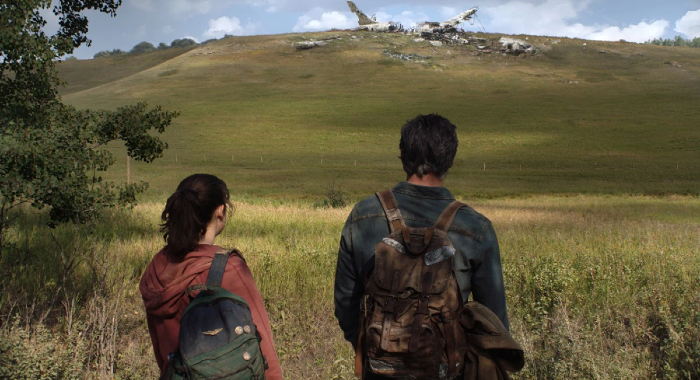Grading the Biggest Differences Between HBO’s The Last of Us and the Game
Rest assured, The Last of Us fans: An adaptation of even the most beloved source material need not be faithful to be extraordinary. Still, when that source material is The Last of Us, one of the most applauded, expertly executed stories in the entirety of video game canon? It gets real tough to justify any deviations from the original masterwork.
There’s undeniably an art to lifting the essence of a story, scrapping what’s unnecessary, elevating what is, and fusing new material to the old, all without disappointing the impossibly high standards of fans. But if you need a blueprint, it might as well be what Chernobyl creator Craig Mazin and game co-developer Neil Druckmann are doing with The Last of Us live-action series on HBO. Rarely has a show toed the line between creative invention and fan appreciation with such grace, retaining what made the 2013 PlayStation game so irresistible while understanding what the bold new landscape of modern television requires. Even when the series deviates from the game’s foundation, Mazin, Druckmann, and a pitch-perfect cast do so with such skill and confidence that it’s rarely compelling to doubt them.
Still—as any good game loyalist will tell you, myself included—The Last of Us à la HBO is not perfect. As each episode rolls out on Sunday nights, I’ll walk us through each significant change the show makes from the game, and slap it with a grade: F for a complete and abject misinterpretation of the source material; C for a misguided one; B for a well-executed but flawed shot at originality; and A for top-tier story-working, the kind that might even be better than the game. (I’ll throw in some A+s and B-s for nuance, but you get the gist.)
More From ELLE

There are spoilers ahead, so proceed with caution. Below, the biggest differences between The Last of Us game and show—and whether Mazin and Druckmann pulled them off.
Game vs. Show Difference #1: A New Timeline
In the PlayStation game, the fungal pandemic responsible for the modern apocalypse begins in the “present day,” a.k.a the game’s release year: 2013. The bulk of the plot—wherein traumatized survivor Joel and his surrogate daughter Ellie criss-cross the country— then plays out two decades in the future, in 2033.
The show takes a decidedly different approach, first opening in 2003, with most of the story taking place in our present day: 2023. The result is to ground the show in immediacy, making it feel as urgent—and as terrifying—as the real-life pandemic we’re still enduring now. Instead of playing out like science fiction, HBO’s The Last of Us tracks more like an alternate timeline to our own, a realistic outcome had our pandemic only begun with infected crops in Indonesia rather than an outbreak in China.
Mazin told Insider the timeline change was one he suggested for that exact reason: The immediacy makes it feel possible. “I just had this thing where if I’m watching a show and it takes place 20 years in the future from my time now, it just seems less real,” he said. Not to mention that the rise of a fascist police state in post-9/11 America isn’t exactly a stretch: In both the game and the show, FEDRA—the Federal Disaster Response Agency—becomes an authoritarian military regime following the infection’s spread. If the outbreak started a mere two years after the attack on the World Trade Center, it’s easy to see how quickly such an institution might rise.
If we want to get nit-picky, though, there’s at least one teeny tiny potential issue with the timeline switcheroo: The song “Future Days” by Pearl Jam plays an important role in Joel and Ellie’s relationship, serving as almost a psuedo-theme song in the game series. Fans will be expecting the song to pop up at one point or another in the HBO series. The only problem? It came out in 2013, meaning in the HBO timeline, it was never recorded. Might Mazin and Druckmann have some sort of retcon up their sleeves?
Grade: A-
Game vs. Show Difference #2: Spores Versus Tendrils
When it was first announced that the HBO characters would not be toting gas masks to ward off clouds of fungal spores, fans weren’t exactly pleased. The spores are a compelling feature of the game, and they’re realistic, too: Real-world fungi rely on spores to spread across large distances. But Mazin, Druckmann, and their crew didn’t want the cast acting behind gas masks for entire scenes, so they opted for something different: long, curling tendrils that pass from zombie to zombie. Together, these wires of fungus create a sort of hive-mind amongst the languishing creatures. If one tendril is touched, others in the vicinity will feel it and react, and they can spread the tendrils from body to body (even via kiss of death).
The logic of this choice goes beyond mere set logistics. The mechanics of spores in the PlayStation game were always a little suspect: Why, for instance, were the spores so easily contained to certain areas? Forget gas masks; wouldn’t they have glued themselves to clothing and skin regardless? Even if we believe that the concentration of spores out in open air wouldn’t be high enough to breathe in and “turn” an unsuspecting victim, certainly Joel and Ellie would at least encounter spores more often?
Still, Mazin isn’t ruling out spores altogether. “You may see spores yet,” he told The Washington Post in January. “It’s not so much that they can’t exist in this world.” In that case, I’ll save my final grade for when the spores and tendrils duke it out on-screen.
Grade: TBD
Game vs. Show Difference #3: Sarah’s Introduction
The game sends us hurtling into the action. When we first meet Joel’s preteen daughter, Sarah, it’s the evening of the outbreak. The trouble has already begun, and so we witness the depth of feeling between father and daughter in only a handful of scenes before Sarah’s gut-wrenching death.
The show gives us much longer to understand their dynamic. We see Sarah and Joel at the breakfast table, mercifully avoiding pancakes; we watch Sarah scribbling notes at school, almost distracted by her classmate’s twitching; we witness her picking up her dad’s birthday gift: the watch he’ll wear for the next two decades, well after its face is shattered. Finally, we see a confrontation between Sarah and her infected neighbor in one of the show’s most unsettling, grotesque early battles. In culmination, these added scenes add oomph to the sequence that follows, re-created almost frame by frame from the PlayStation game. Mazin and Druckmann didn’t have to change much from Sarah’s origin story, nor did they change the most essential bit: the swiftness and brutal manner of her death. But they added just enough to make the hurt that much more visceral.
Grade: A
Game vs. Show Difference #4: How Tess Dies
In case you’ve yet to catch on, Sarah’s death is only the tip of the iceberg in a long list of deaths to come on The Last of Us. Next in line is Tess, who—in the game—suffers a fatal gunshot wound at the hands of FEDRA agents after she’s caught sneaking into the Boston capitol building with Joel and Ellie in tow. She succumbs to her injuries not by accident; she puts herself in the line of fire as a distraction, to allow her would-be lover and the would-be cure for mankind to slip out undetected. This incident takes place mere moments after she reveals to Joel and Ellie the zombie bite on her collarbone. It’s already over for her, she insists, but she refuses to let the fungus control her. She’ll die on her own terms, a sacrifice for the sake of a possible cure.
In the show, Anna Torv’s Tess receives the same chomp at the neck, but her death is slightly more nuanced—and, depending on your interpretation, more or less powerful. The infected, not FEDRA agents, storm the capitol after Joel inadvertently alerts them of their position, and so Tess promises to ward them off. As Joel and Ellie make their escape, Tess dumps oil barrels and hand grenades onto the ground, ready to strike a lighter and set the place ablaze. But little can she ignite the flame before a stalker waltzes in, creeps right up to her, and presses its lips to hers in a disgusting make-out session. The mycelium tendrils in his throat slip down hers; only then does her shaking hand release the lighter. The capitol goes boom as Joel and Ellie watch from afar.
There are two ways to look at this scene. The generous read is this: Tess, already in the sway of the fungus, destroys her controllers in one last noble act of autonomy. The less generous take is this: Tess is unnecessarily violated for the sake of on-screen spectacle. Either way, the scene accomplishes a heart-pounding payoff, even if it doesn’t pack quite the emotional wallop of Tess’s in-game loss.
Grade: B
Game vs. Show Difference #5: Bill and Frank
Don’t expect fans to shut up about episode 3 of The Last of Us any time soon. It’s one of the better examples of adaptation that television has seen in quite some time, even if it deviates significantly from the source material. The result is one of the few examples where the show’s story is much better than the game’s.
In the original scenes involving survivalist Bill, Joel and Ellie track him down outside Boston because they’re in need of a car. He reluctantly agrees to help them out, and after mowing down hordes of infected, they eventually take temporary shelter in an abandoned house. There, they discover a rotting corpse hanging from the ceiling, which Bill soon recognizes: The body belongs to Frank, his ex-lover. Their relationship ended on poor, even vitriolic terms, but the anguish on Bill’s face is visible even as he spits, “Well, fuck him.”
The scene is sad, but it’s disappointingly forgettable in comparison to so many other gut-wrenching moments throughout the game. And so the show made a change, a necessary one, to make Bill and Frank more than just a footnote in The Last of Us canon. In the HBO series, an entire episode is devoted to their unexpected romance; their jokes and love-making and arguments; how they run the self-sustaining farm that supplies goods to Tess, Joel, and others in Boston. We watch them grow together over not just hours but years, and then we watch them die together in one of the most profound moments of devotion the entire season has to offer.
True, we miss out on some of the delicious banter shared between Ellie and Bill in the game. But, instead of a fleeting sign of despair and futility, we get a resounding message of fortitude. Bill tells Joel, via letter, “I used to hate the world, and I was happy when everyone died. But I was wrong, because there was one person worth saving…That’s why men like you and me are here. We have a job to do, and God help any motherfuckers who stand in our way.”
We can be sure it’s a message Joel will remember.
Grade: A+
This story will be updated.

Associate Editor
Lauren Puckett-Pope is an associate editor at ELLE, where she covers film, TV, books and fashion.



